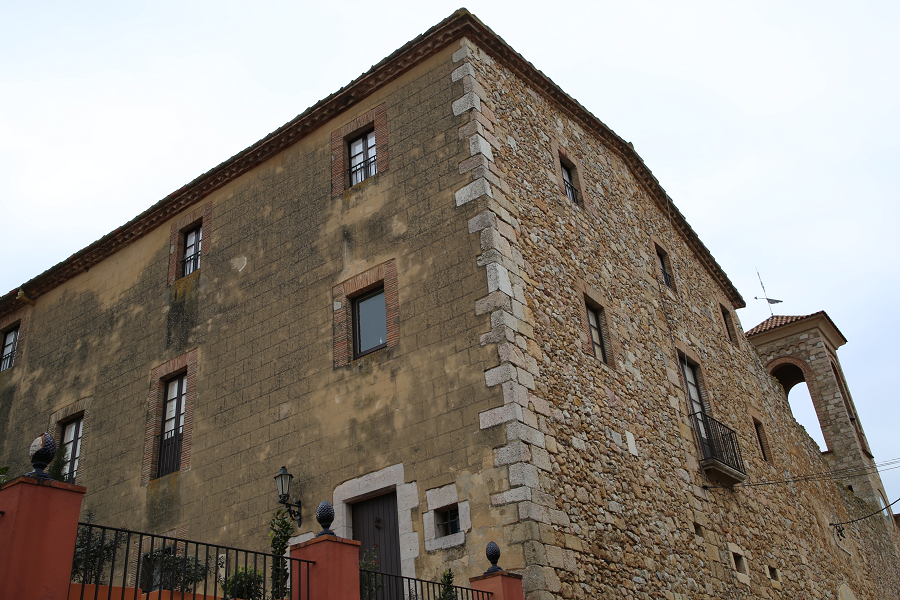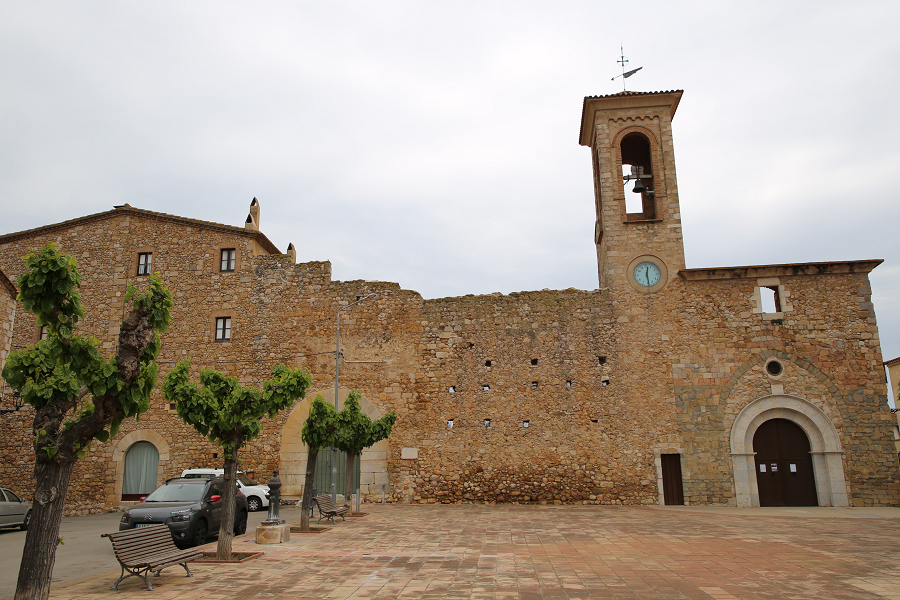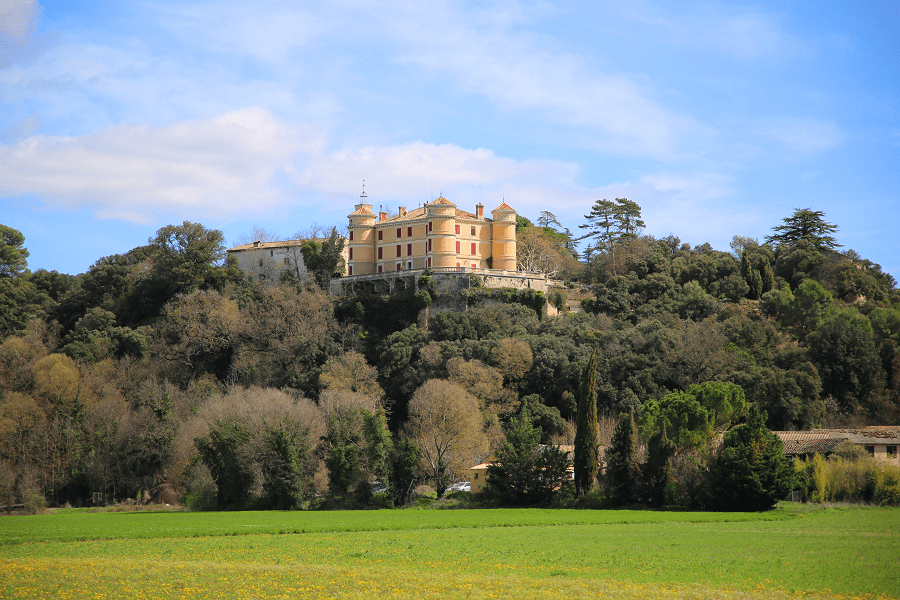The Castle of Albons (cat. El Castell d’Albons) is a military and civil construction that was the origin of the town of Albons (Girona province, Catalonia, Spain) and which is declared a cultural asset of national interest. There remains a remarkable complex, with a part taken advantage of for a mansion, a large portal with a voussoir and only a part of the enclosure wall. Medieval, 17th century work.
Architecture
Next to the north side of the church, there is a large building called Castell d’Albons that occupies the site of the medieval castle but it looks like a great mansion. It has a square floor plan, has two floors and a double slope roof. The ground floor has vaults of mortar stone and the upper rooms overlays. It features large-sized doors, monolithic lintel windows (some with dates from the 17th century) and stone stairs (one of them exterior, adjoined to the south facade). Between this house and the church, there is a patio, closed to the west by a high wall with a large voussoir portal. In the square of the Plaza Mayor, on the west side of the Castle and the church, there is the only vestige of the wall, the lower half of a medieval square tower, built with large slabs and corner ashlars.
The current appearance of the building is that of a fortified farmhouse from the 15th century with reforms and occasional modifications that have been introduced over the last five hundred years. On the esplanade in front of the castle, where in the past the rest of the buildings and annexes must have been, the long facade of the building can be seen, with a large portal dating back to the 14th-15th centuries giving access to the inner courtyard, bounded on the south side to the wall of the church of Sant Cugat. Inside the courtyard, there is another doorway with a voussoir and rectangular windows of the same period. The urban expansion that the town has recorded, has disfigured the primitive structure of a town built on the highest point of the hill, around the church and the castle. In the early 80s of the last century, it was rehabilitated and turned into several houses, always respecting its original structure.
History
It is a territorial castle documented in 1170. The site of Albora is mentioned in the year 959 and in a document of the 980 the place of Alburne is mentioned, of the county of Empúries. There is also a documentation from the 12th century where the site is referred to as a pension of the Count of Rosselló with the names of Alburnos, Alburnis and Albornis, and with the church of Sant Cugat (Sancti Cucuphatis de Albornis). The church of Sant Cugat is mentioned in the second half of the 13th century, although the architectural elements show that it already existed in the Early Middle Ages. The castle is also cited in documents from the 13th century, when the family Des Torrent held it in fief from the lords of Torroella, still forming part of the county of Empúries. In 1272 the Viscount Dalmau VI of Rocabertí swaps the castles of Albons and Torroella for other castles with infant Peter the Great, in this way the place passed to the crown.
In 1311 King James II the Just sold the feudal dominion of Albons to the Count of Empúries Ponç V, which later was one of the many reasons for discord between them. Ponç began the fortification of the town and the king, who was raising his castle of Montgrí, prohibited him from continuing the works of both: the castle of Albons and that of Bellcaire. In 1322 the same king donated the domain of Albons to Bernat of Orriols, whose successors continued to possess it for centuries, named Foixà since the end of the 14th century and Vallgornera from the 16th century. During these centuries, two people stood out especially.
From 1356, due to different connections, it first went to the hands of Bernat Alemany de Foixà and Porqueres, the lord of Foixà, surely by means of his wife Catalana, sister of Berenguer and Lady of Orriols. The other personage that stands out is the Dominican Tomàs de Vallgornera, born in the town (in the castle) in 1595, author of philosophical and religious works.














